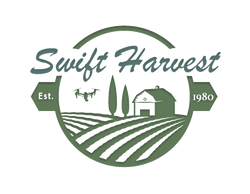United States Department of Agriculture
Agricultural Marketing Service
Federal Grain Inspection Service
U.S. Standards May 1988
Distribution: FGIS, OSP, Industry Originating Office: FMD PPMAB
Subpart G -- United States Standards for Oats
Contents
Subpart G -- United States Standards for Oats 1
Terms Defined 2
Principles Governing the Application of Standards 2
Grades and Grade Requirements 3
Special Grades and Special Grade Requirements 4
Official US Standards for Grain
Oats
May 1988
Page 2
Terms Defined
§ 810.1001 Definition of oats.
Grain that consists of 50 percent or more of oats (Avena sativa L. and A. byzantina C.
Koch) and may contain, singly or in combination, not more than 25 percent of wild oats
and other grains for which standards have been established under the United States
Grain Standards Act.
§ 810.1002 Definition of other terms.
(a) Fine seeds. All matter that passes through a 5/64 triangular-hole sieve after sieving
according to procedures prescribed in FGIS instructions.
(b) Foreign material. All matter other than oats, wild oats, and other grains.
(c) Heat-damaged kernels. Kernels and pieces of oat kernels, other grains, and wild
oats that are materially discolored and damaged by heat.
(d) Other grains. Barley, corn, cultivated buckwheat, einkorn, emmer, flaxseed, guar,
hull-less barley, nongrain sorghum, Polish wheat, popcorn, poulard wheat, rice, rye,
safflower, sorghum, soybeans, spelt, sunflower seed, sweet corn, triticale, and wheat.
(e) Sieves.
(1) 5/64 triangular-hole sieve. A metal sieve 0.032 inch thick with equilateral triangular
perforations the inscribed circles of which are 0.0781 (5/64) inch in diameter.
(2) 0.064 x 3/8 oblong-hole sieve. A metal sieve 0.032 inch thick with oblong
perforations 0.064 inch by 0.375 (3/8) inch.
(f) Sound oats. Kernels and pieces of oat kernels (except wild oats) that are not badly
ground-damaged, badly weather-damaged, diseased, frost-damaged, germ-damaged,
heat-damaged, insect-bored, mold-damaged, sprout-damaged, or otherwise materially
damaged.
(g) Wild oats. Seeds of Avena fatua L. and A. sterilis L.
Principles Governing the Application of Standards
§ 810.1003 Basis of determination.
Other determinations not specifically provided for under the general provisions are
made on the basis of the grain as a whole.
Official US Standards for Grain
Oats
May 1988
Page 3
Grades and Grade Requirements
§ 810.1004 Grades and grade requirements for oats.
Grade
Minimum limits- Maximum limits-
Test weight
per bushel
(pounds)
Sound oats
(percent)
Heatdamaged
kernels
(percent)
Foreign
material
(percent)
Wild oats
(percent)
U.S. No. 1
U.S. No. 2
U.S. No. 3 1
U.S. No. 4 2
36.0
33.0
30.0
27.0
97.0
94.0
90.0
80.0
0.1
0.3
1.0
3.0
2.0
3.0
4.0
5.0
2.0
3.0
5.0
10.0
U.S. Sample grade--
U.S. Sample grade are oats which:
(a) Do not meet the requirements for the grades U.S. Nos. 1, 2, 3, or 4; or
(b) Contain 8 or more stones which have an aggregate weight in excess of 0.2 percent of the
sample weight, 2 or more pieces of glass, 3 or more crotalaria seeds (Crotalaria spp.), 2 or more
castor beans (Ricinus communis L.), 4 or more particles of an unknown foreign substance(s) or a
commonly recognized harmful or toxic substance(s), 8 or more cocklebur (Xanthium spp.) or similar
seeds singly or in combination, 10 or more rodent pellets, bird droppings, or equivalent quantity of
other animal filth per 1-1/8 to 1-1/4 quarts of oats; or
(c) Have a musty, sour, or commercially objectionable foreign odor (except smut or garlic odor); or
(d) Are heating or otherwise of distinctly low quality.
__________
1 Oats that are slightly weathered shall be graded not higher than U.S. No. 3.
2 Oats that are badly stained or materially weathered shall be graded not higher than U.S. No. 4.
Official US Standards for Grain
Oats
